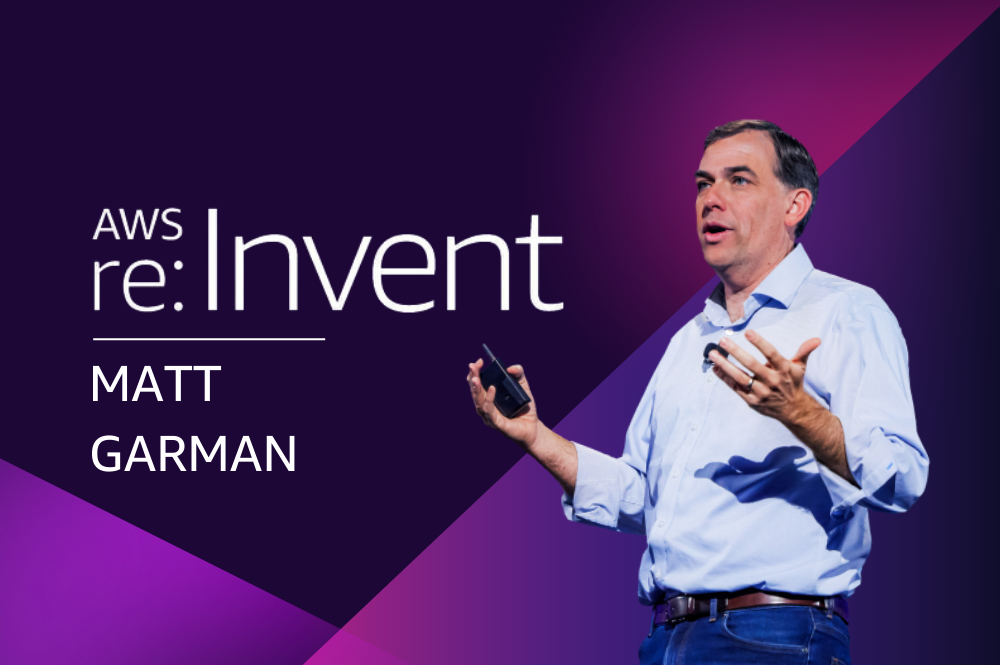We’ve all been there: lost in a sea of information, struggling to find the exact answer we need. It’s frustrating, time-consuming, and can seriously dampen employee productivity. That’s why we decided to dive into the world of Generative AI and explore how it could transform our workplace.
Cloudelligent turned to Amazon Q Business, an AI-powered assistant that promises to streamline workflows and boost employee satisfaction. By integrating it with our Confluence knowledge base, we aimed to create a personalized, always-available helper that could answer our questions, generate content, and even complete tasks.
In this blog post, we’ll share our journey, from initial setup to real-world results. We’ll explore the challenges we faced, share insights on what we discovered, and give our take on whether Amazon Q Business lives up to the hype.
The Setup: Integrating Amazon Q Business with Confluence
Setting up Amazon Q Business to work with Confluence was both an exciting experiment and a bit of a learning curve. The prospect of an AI assistant that could dive into our knowledge base and pull out relevant information on command was compelling.
To truly appreciate the magic behind the scenes, let’s delve into the technical details. The following diagram shows the application architecture of Amazon Q Business integration with a company’s knowledge base (Confluence in our case).
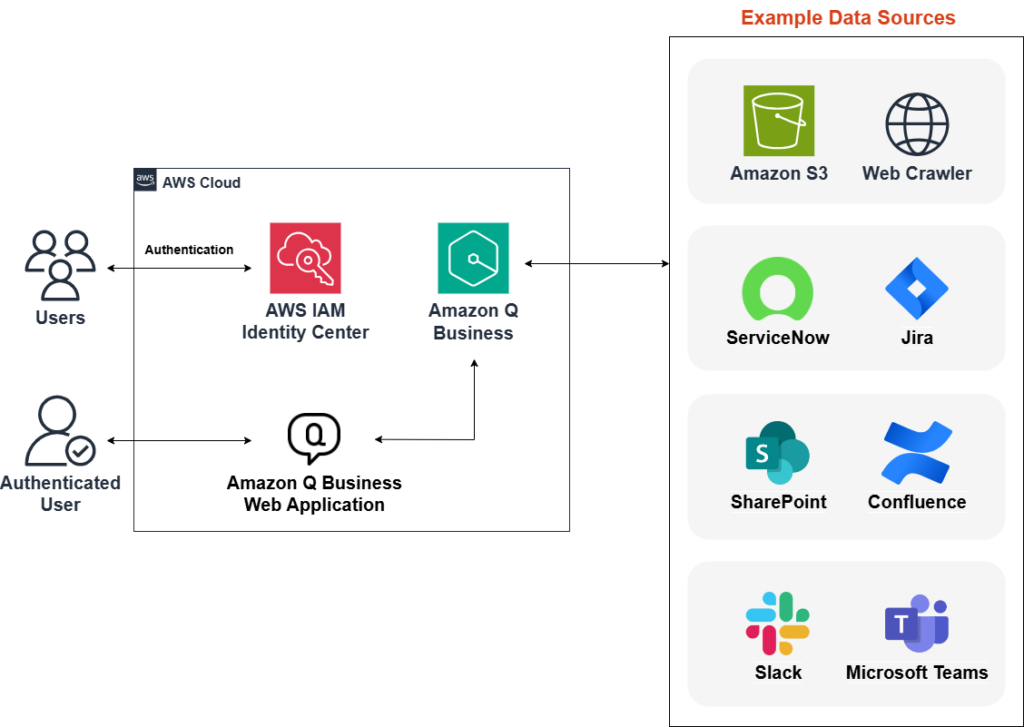
Figure 1: Application architecture diagram of how Amazon Q Business integrates with your existing platforms
In this setup, Amazon Q Business connects directly with our Confluence knowledge base via a secure API, which enables it to access, search, and retrieve information in real-time. This architecture ensures that when a user queries Amazon Q, the assistant can swiftly pull relevant content from Confluence, process it through its natural language model, and deliver clear, concise responses.
Here’s a step-by-step breakdown of the integration process.
1. Gather Confluence Credentials
We started by gathering all the necessary details about our Confluence setup, including endpoints and API keys. This information was crucial for establishing a secure connection between Amazon Q and Confluence.
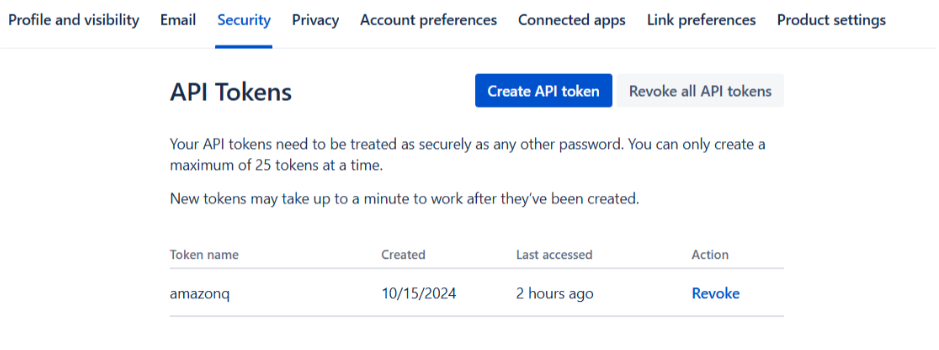
Figure 2: Establishing a secure connection between Amazon Q Business and Confluence with API keys
2. Create an Amazon Q Business Application
Next, we headed to the AWS Console to create our Amazon Q Business application. The interface was intuitive and guided us through the setup process with ease.
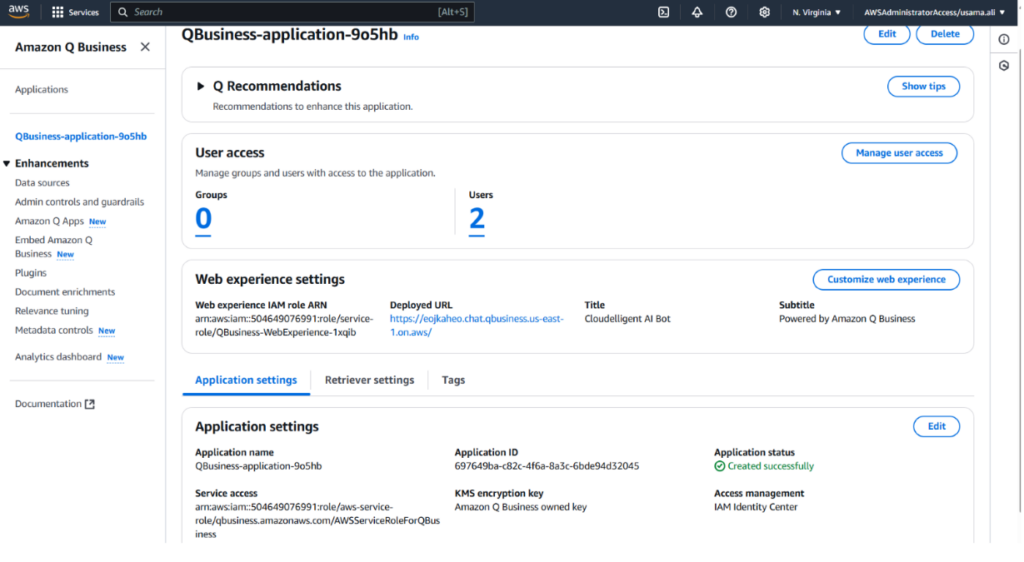
Figure 3: Creating an Amazon Q Business app
3. Create a Retriever Index
The step after that was to create a retriever index within Amazon Q. This part involved capacity provisioning and enabled Amazon Q to retrieve and connect our Confluence documents to the application.
4. Add Confluence as a Data Source
Using the information we collected in Step 1, we set up Confluence as a data source within Amazon Q. This configuration ensured Q could access our knowledge base directly, with the flexibility to update as new information is added.
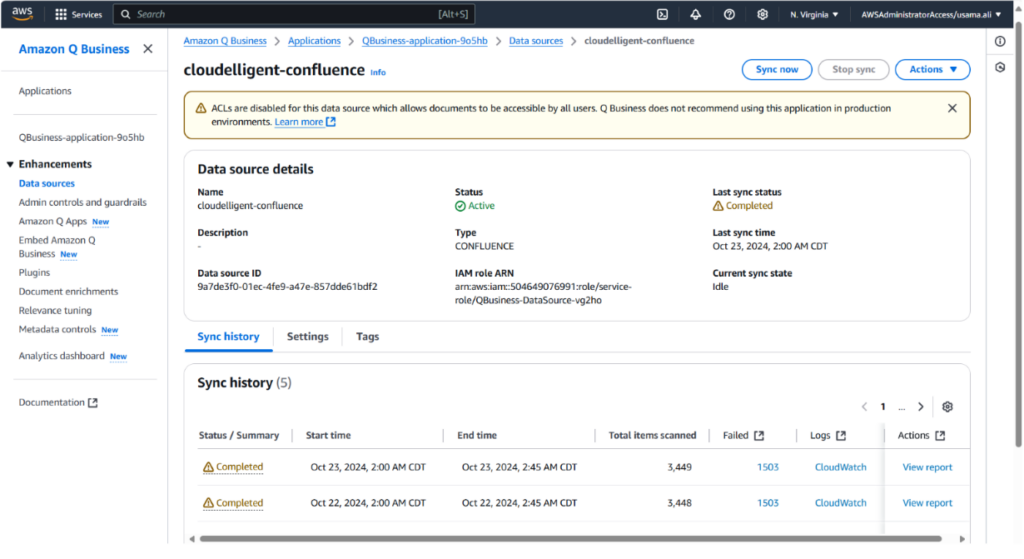
Figure 4: Setting up Confluence as a data source within Amazon Q
5. Sync the Data Source
With the data source configured, we initiated the synchronization process. Depending on the size of your data source, this can take some time—in our case, it took about 2.5 hours to fully integrate all of our Confluence content.
6. Review Sync Reports and Logs
Once the sync was complete, we reviewed the report and logs on Amazon CloudWatch. This step was essential for troubleshooting any issues and gaining insights into the integration process. It helped us ensure that everything was working as expected and allowed us to make any necessary adjustments.
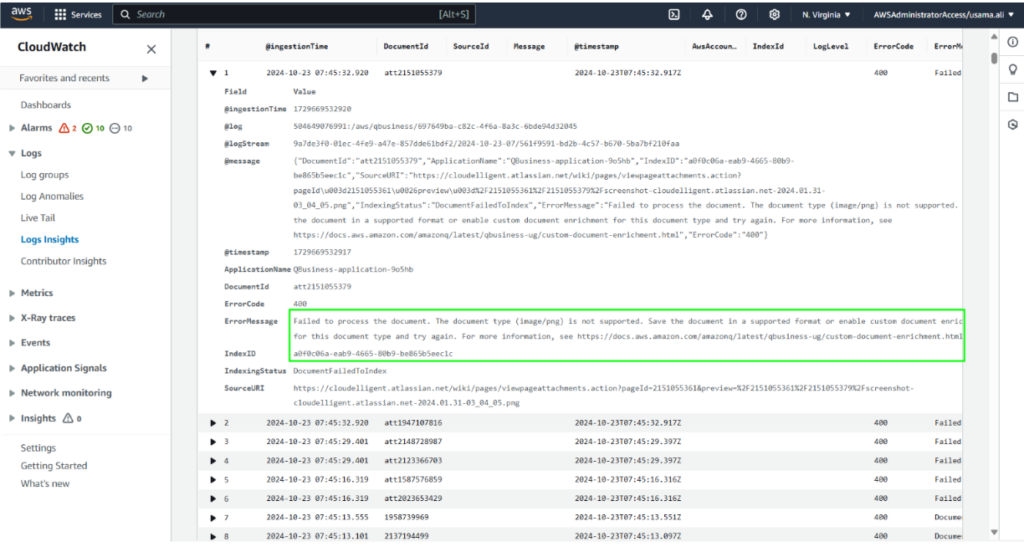
Figure 5: Reviewing sync reports and logs on Amazon CloudWatch
And just like that, the groundwork for our Generative AI assistant was complete. Next up: fine-tuning the settings to make sure it runs smoothly and delivers exactly what our team needs.
Configuring Amazon Q Business to Our Needs
Now that we had our integration set up, it was time to fine-tune Amazon Q Business to fit our specific needs. Here’s a breakdown of the key configurations we made:
1. Confluence Cloud Configuration
- Endpoint URL: We provided the specific URL of our Cloudelligent Confluence instance.
- API Key: We input the API key generated for our Confluence instance to ensure secure access to the knowledge base.
- Authentication Method: We opted for Basic Authentication, a straightforward method for providing credentials. However, for enhanced security, OAuth 2.0 authentication could be explored.
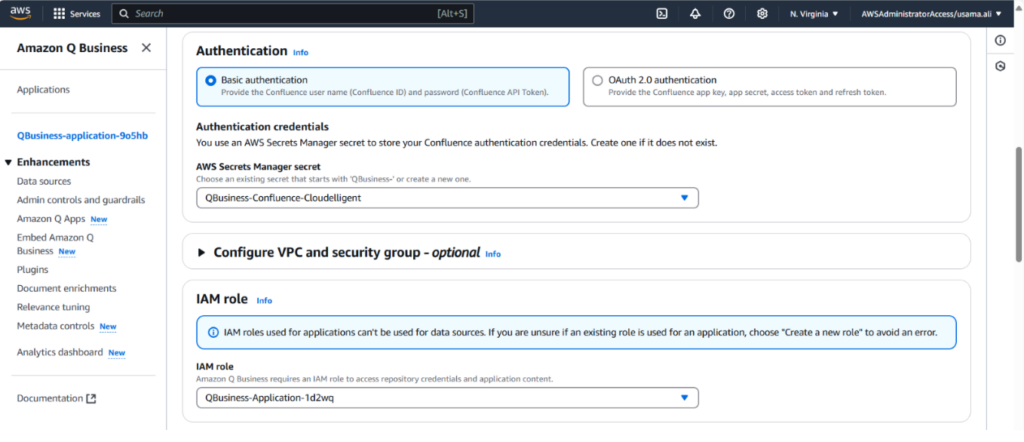
Figure 6: Configuring our AI chatbot
2. Amazon Q Business Application Configuration
- Web Experience: We enabled the web experience to provide a user-friendly interface for interacting with the AI assistant and named it “Cloudelligent AI Bot.”
- IAM Identity Center Users: We added specific IAM Identity Center users to access and manage the Amazon Q Business application.
3. Amazon Q Business Retriever Index
We chose the “Starter” index for our initial testing and prototyping phase. For production environments, we would typically opt for the “Enterprise” index, which offers higher capacity and performance.
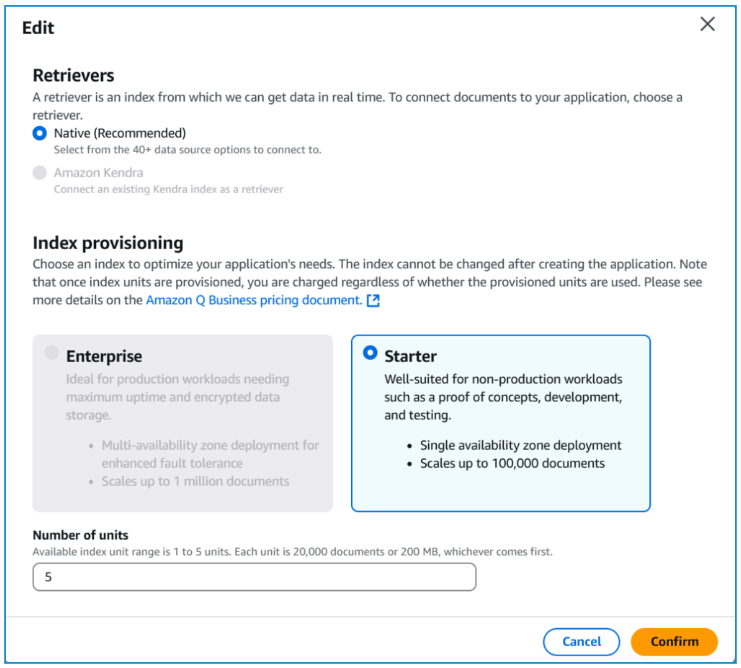
Figure 7: The retriever index for Amazon Q Business
4. Amazon Q Business Data Source Configuration
- Confluence Details: We provided the necessary details about our Confluence instance, including the endpoint URL and API key.

Figure 8: Adding our Confluence instance as a data source
- AWS Secret Manager: We used AWS Secrets Manager to securely store sensitive information like API keys.
- IAM Role: We assigned an IAM role that allowed Amazon Q to access the secrets and other resources stored in Amazon S3, which would be essential for our sync repository.
We also configured the sync details, including:
- Sync Scope: Specifying what should be synced (e.g., spaces, blogs, pages, archive pages).
- Sync Frequency: Determining how often the data source should sync (e.g., daily, hourly).
- Sync Mode: Choosing between a full sync every time or syncing only the data that has been added or modified.
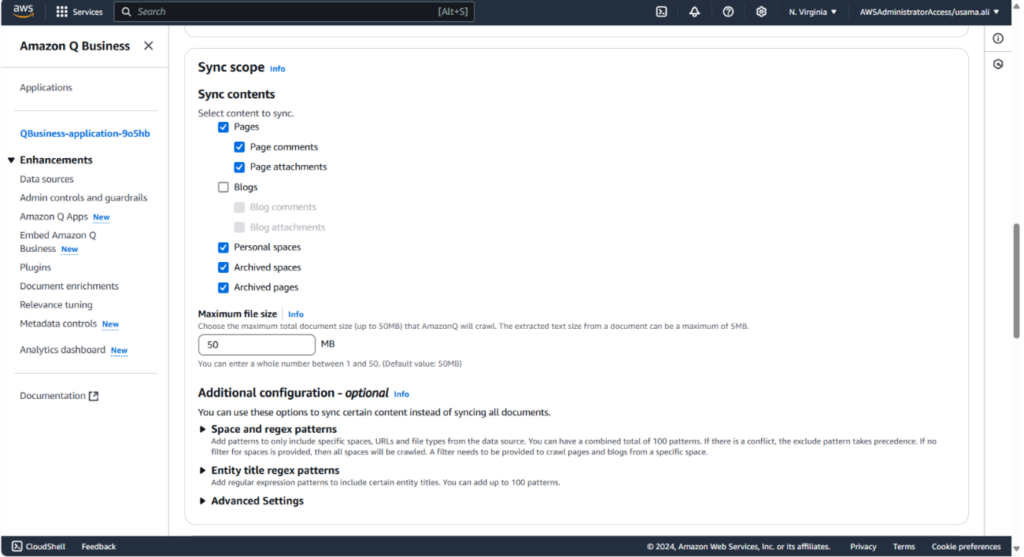
Figure 9: Choosing what should be synced
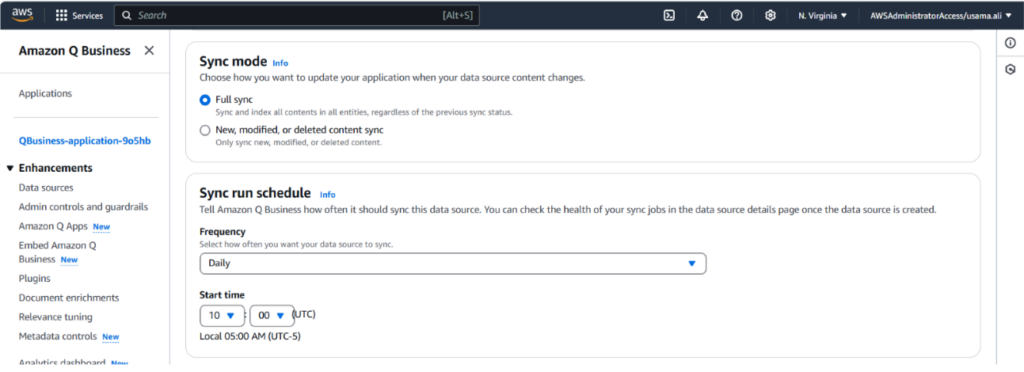
Figure 10: Specifying the sync mode and frequency for our Confluence integration
Overall, setting up Amazon Q Business with Confluence was a smooth process. Thanks to AWS’s clear documentation on Connecting Confluence (Cloud) to Amazon Q Business, we had all the guidance needed right at our fingertips. The integration with our Cloudelligent Confluence was seamless, and we were able to create a centralized, high-level hub where our team can easily access company knowledge.
And with that, ladies and gentlemen, our Generative AI Assistant was primed and ready. It was time to take it out for a spin and see it in action!

Figure 11: Voilà! The Cloudelligent AI Bot
Features of the Generative AI Assistant: What We Explored
After integrating Amazon Q Business with Confluence, we were excited to see how it could transform our workflow. Here are the key aspects we tested to assess its real-world impact on our employee experience:
- Centralized Knowledge Hub: We assessed how well Amazon Q Business integrated with Confluence to create a single source of truth for our company’s knowledge. We measured factors such as ease of access, information accuracy, and overall user satisfaction.
- Data Accessibility and User Experience: Another focus was Amazon Q’s efficiency in helping users locate needed information. We evaluated factors such as search accuracy, response time, and the clarity of the AI assistant’s answers.
- Response Accuracy and Relevance: Beyond just finding information, we looked at how accurate and relevant Amazon Q’s responses were. For us, accuracy was essential, especially with complex topics that required pinpoint answers.
- Summarization: We tested Amazon Q’s ability to summarize lengthy documents stored in Confluence. We checked if the summaries were concise, relevant, and useful for fast decision-making.
- Security and Compliance: Protecting sensitive information was essential, so we tested Amazon Q’s adherence to access controls and data privacy standards. Its ability to restrict access to authorized users only and maintain regulatory compliance was crucial in our review.
Putting the AI-Powered Assistant to the Test: Real-World Scenarios
Cloudelligent was eager to see how the AI assistant would perform in real-world scenarios. We tested it with various prompts, ranging from simple to complex, and across different domains. While the AI assistant was able to understand and respond to queries related to our documentation on Confluence, the results were a bit of a mixed bag.
To give the assistant a thorough workout, we explored several use cases that reflect our daily workflows. Here’s a glimpse into what we tested.
Summarization
To start, we wanted to see how effectively Amazon Q Business could generate summaries, a critical feature for our team. The goal was to see if it could capture the essence of documentation and transform complex chunks of text into easily digestible bites.
Prompt: “Can you provide a 200-word summary of the Cloudelligent Professional Code of Ethics?”
Results: The assistant delivered a concise and accurate summary that captured the essence of the document, making it easy to grasp at a glance. However, while the output was clear, it lacked the structured breakdown we hoped for—bullet points or step-by-step highlights would’ve been more practical. Still, this feature showed great potential in saving time, especially when dealing with lengthy documentation.
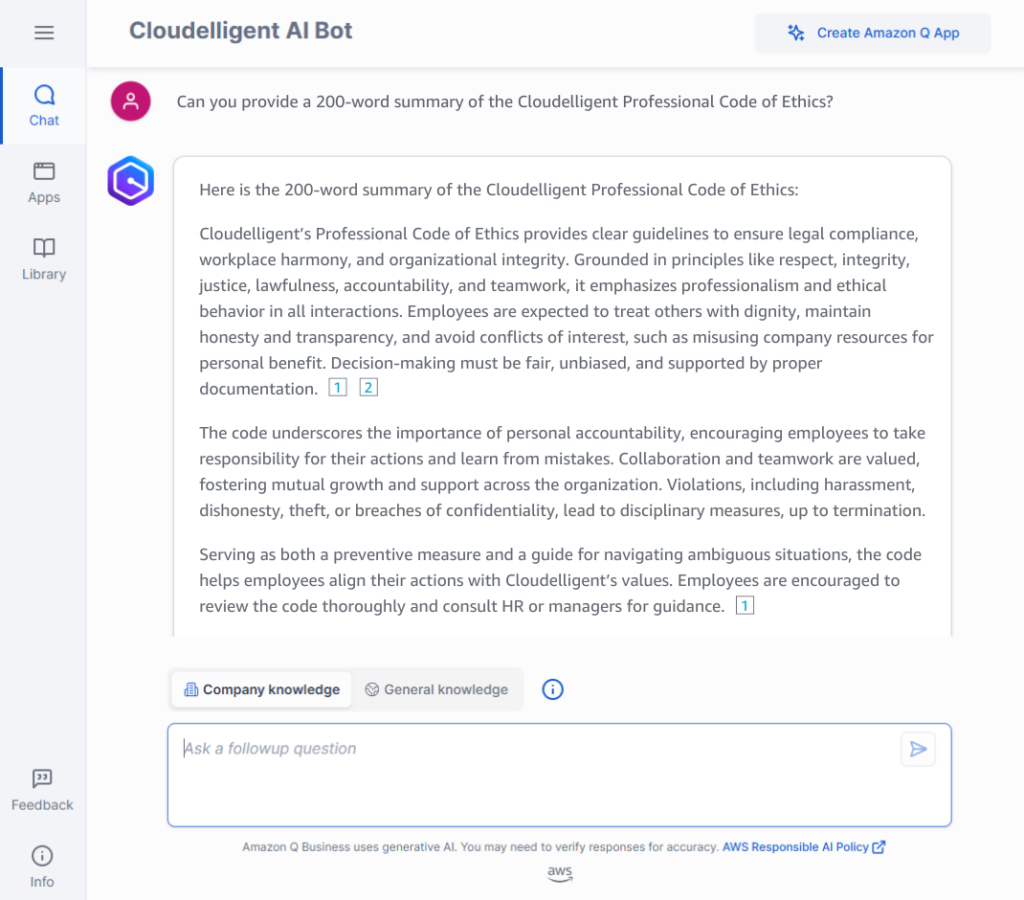
Figure 12: A prompt and relevant results on summarization abilities
Answering Employee Queries
Another big test was Amazon Q’s ability to handle direct employee queries about company policy or project details etc.
Prompt: “Is there a dress code at Cloudelligent?”
Prompt: “Give me a list of the different color sets of the Cloudelligent branding.
Results: Both queries were answered accurately and concisely, saving employees time that might otherwise be spent hunting down information in Confluence. However, the output format could be better; for example, listing color codes in a neat, numbered format would enhance usability.
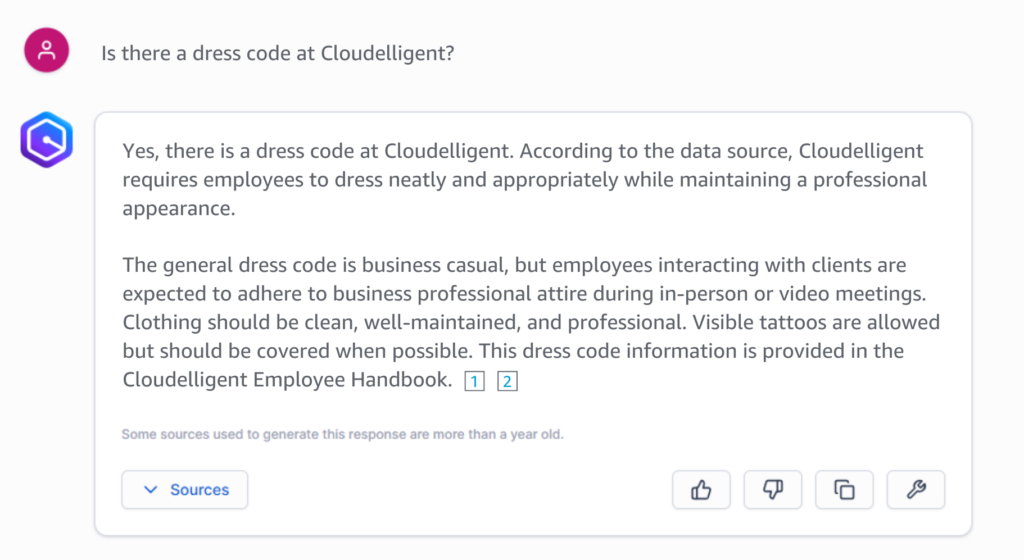
Figure 13: A prompt and relevant results on typical employee questions
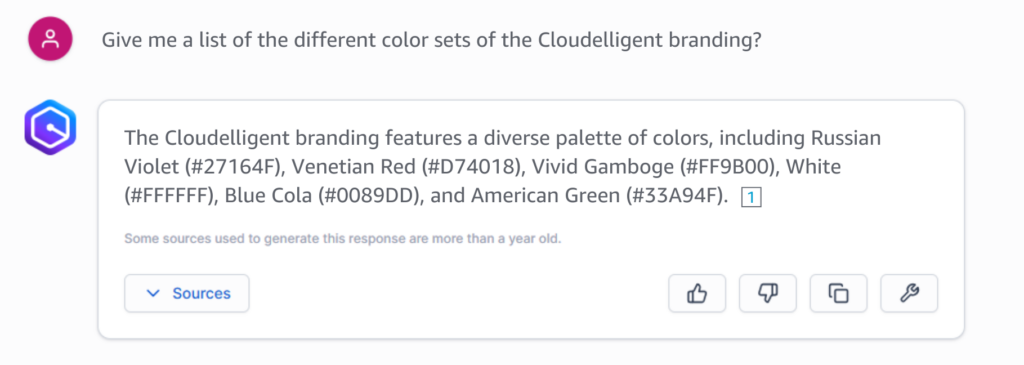
Figure 14: A second prompt and relevant results to satisfy employees’ inquisitive minds
Content Generation
Next, we wanted to see how effectively Amazon Q Business could generate content based on our data.
Prompt: “What are some third-party tools and services we leverage for our clients? Use a numbered list.”
Results: The response was quick and relevant, delivering a clear, accurate list of tools and services. While it did follow our prompt’s request for a numbered list, we felt the assistant should naturally format this way without needing to be asked. Nevertheless, for repetitive queries or team FAQs, the feature demonstrated clear value.
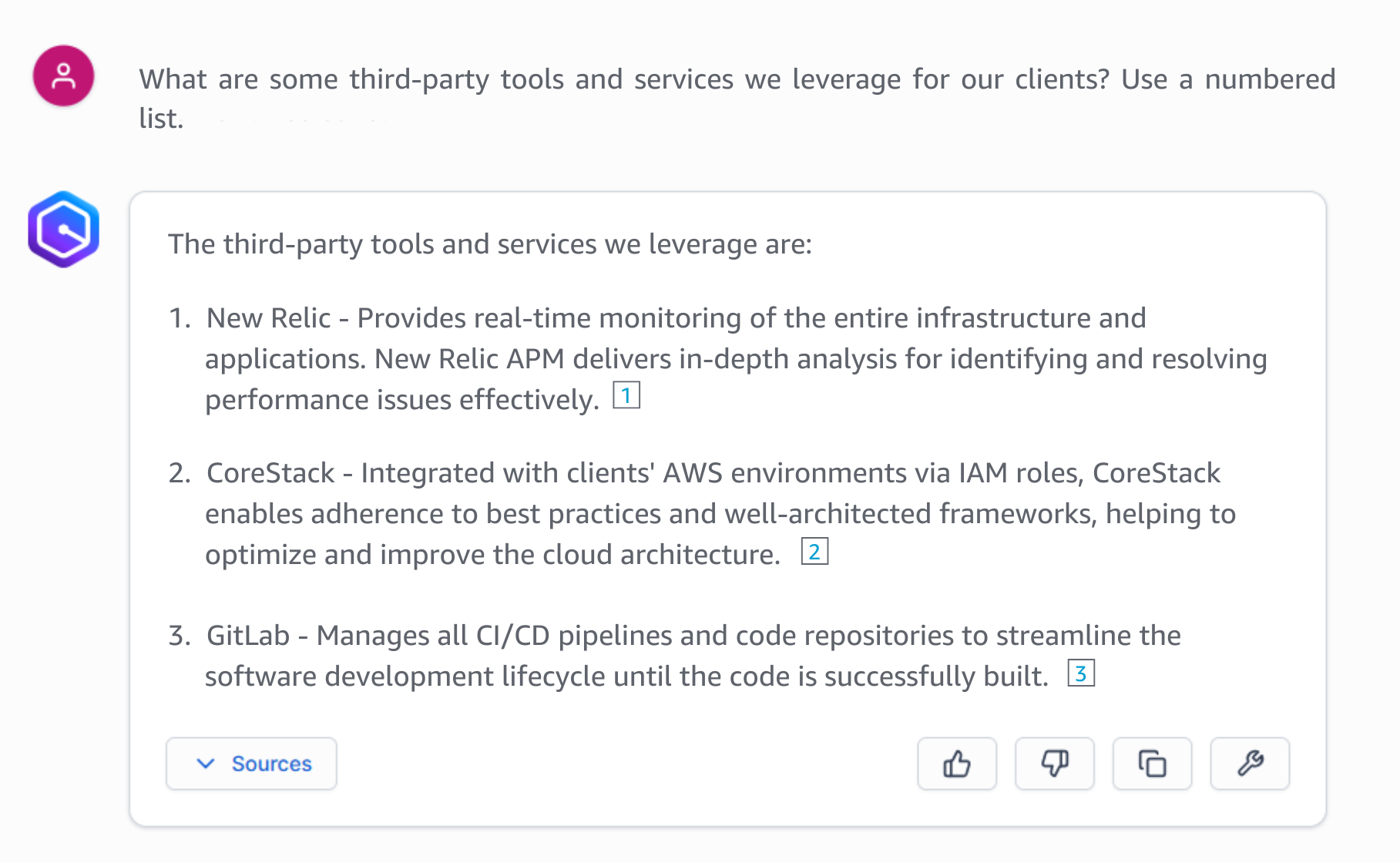
Figure 15: A prompt and results on content generation
Key Insights and Collaboration
Lastly, we looked at Amazon Q’s potential to enhance collaboration by generating key insights and tracking team contributions.
Prompt: “Draft a list of team-building activity suggestions based on Cloudelligent’s employee engagement survey results.”
Results: The suggestions were thoughtful and relevant, offering actionable ideas tailored to our survey findings. This time, it formatted the list well! However, unlike tools like ChatGPT, Amazon Q Business relied on existing data, which can limit its ability to offer creative suggestions beyond what’s in our systems.
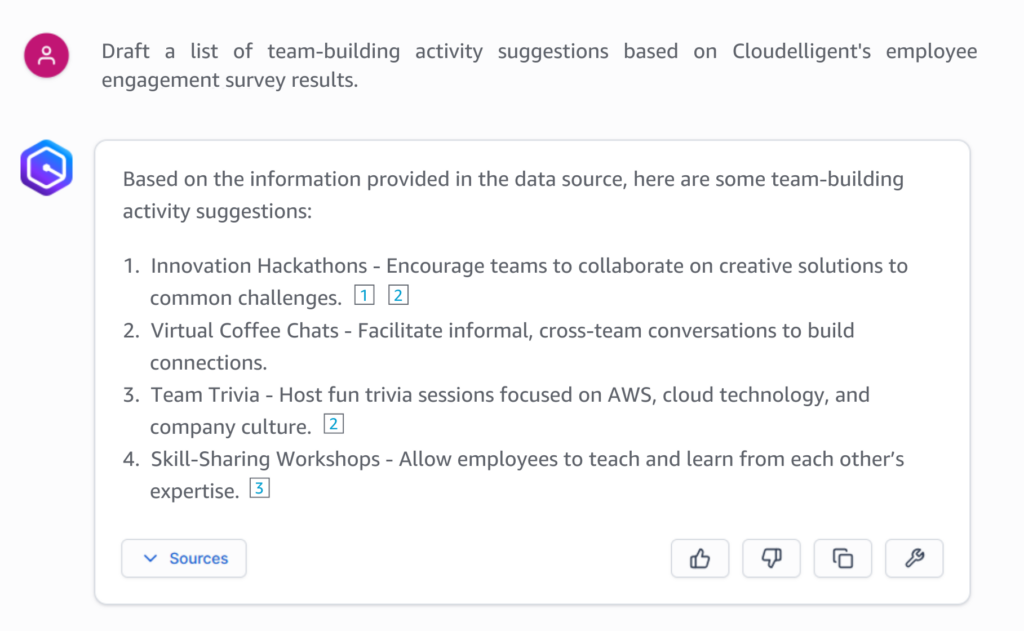
Figure 16: A prompt to foster team collaboration
Through this testing process, we saw the potential Amazon Q Business brings to the table, but also identified areas for improvement, particularly around step-by-step guidance and generating content with more structure. All in all, it’s a solid assistant for handling straightforward queries, though it might need a little backup when it comes to complex or open-ended tasks.
We’ve also taken Q’s partner in crime, Amazon Q Developer, out for a test drive. Curious how it stacks up? Don’t miss our deep dive in The Good, the Bad, and the AI: A Review of Amazon Q Developer.
Security and Access Controls
One of our top concerns with any new tool is security. Could Amazon Q Business really handle the sensitive data we store in Confluence? Would it honor our existing access controls, making sure only authorized users have access to specific information? We decided to put it to the test—and we’re happy to report it did pretty well.
Amazon Q Business has been designed with robust access control features that make it easy to integrate into our current security framework. Here’s a closer look at how it works:
- User Authentication: Amazon Q Business uses Identity and Access Management (IAM) or AWS Identity Center. Only users who have been added to the Amazon Q Business application are able to access it, which gives us full control over who can use the assistant and what they can see.
- Access Control Lists (ACLs): Access controls are applied at the data source level, and Amazon Q Business can pull this information from our Confluence setup. When a user initiates a chat, Amazon Q Business checks the ACLs from Confluence to filter responses based on the user’s permissions and ensures that responses are tailored to what they’re allowed to see. This means no one is able to access information outside their clearance, even in chat responses.
- Identity Crawler and Authorization: Amazon Q’s Identity Crawler extracts user and group membership from Confluence and stores it in the Amazon Q user store. The assistant then relies on this principle store information and the Authorization feature to restrict chat responses. This way, even if a user searches broadly, they’ll only get answers based on the documents they have access to—no surprises or security slips.
- Sensitive Information Protection: One of our favorite security features is how Amazon Q Business handles sensitive information. If a user tries to extract specific sensitive details, such as certificates or security keys, the assistant automatically replaces these with placeholders, like xxx-xxxxx-xx. This thoughtful touch ensures that sensitive data is safeguarded, even in the chat interface.
Impact on Employee Experience: The Results Are In
One of our primary goals for integrating Amazon Q Business with Confluence was to elevate employee experience. We were curious to see how this AI-powered assistant would impact our daily workflows and overall productivity.
The results are encouraging.
- Easier Onboarding for New Team Members: One of the standout benefits is how much smoother the onboarding process has become. New hires can now use the Generative AI assistant to dive into information about various company policies, projects, clients, and tasks without having to track down other team members. This not only saves time for new employees but also reduces the workload for our existing team, who don’t need to answer basic questions or explain details repeatedly.
- More Streamlined Workflows: Employees are now able to search for and summarize project-related information directly within Confluence, which has led to a noticeable improvement in workflow efficiency. There’s less manual effort spent on hunting down information, so team members can focus on higher-value tasks rather than logistical back-and-forth.
- Enhanced Productivity and Reduced Manual Effort: The feedback from employees has been overwhelmingly positive when it comes to time savings. By having a central assistant that can fetch, summarize, and answer project-specific questions, our team can get the information they need in a fraction of the time it used to take. Whether it’s checking a project’s history, understanding client requirements, or accessing technical documentation, Amazon Q Business has taken a lot of the “busy work” out of these tasks.
The Verdict: What Worked, What Didn’t, and Key Takeaways
After spending time with Amazon Q Business in real-world use, we’ve seen where it shines—and where there’s room for improvement. Here’s our breakdown of the pros, cons, and some final thoughts on how well it delivered as a tool for enhancing employee experience.
The Pros
- Seamless Integration: Amazon Q connected easily with our Confluence setup, making it straightforward to access and query our knowledge base.
- Robust Access Control: With fine-tuned access control, we could ensure that only authorized users could access specific documents. This is key for data privacy and security.
- Flexible Sync Options: Amazon Q provides flexibility with sync frequency and modes, which allows us to customize how often Confluence data is refreshed, giving us control over data updates.
- Detailed Logging: Having access to CloudWatch logs helped us quickly troubleshoot and resolve sync issues, which was invaluable for smooth operation.
The Cons
- Limited with Non-Text Components: Unfortunately, Amazon Q Business can’t handle images or code blocks in the documentation. This limits its functionality for technical documentation that relies on these elements.
- Challenges with Table Parsing: Information in tables often didn’t come through clearly. If your documentation relies on tables for data, Amazon Q may struggle with providing clean outputs.
- Basic Response Formatting: While Amazon Q answers questions accurately, its responses could be better structured. We’d love to see it organize answers with bullet points or numbered lists to improve readability.
A New Update Worth Mentioning! Amazon Q Business recently announced a game-changer. Starting December 1, 2024, it will support extracting insights from visual elements in documents. This could address some of the current limitations and make it even more versatile. We’re excited to see how this feature evolves!
Final Thoughts
So, is Amazon Q and Confluence integration worth it? For businesses like Cloudelligent looking to use Generative AI to enhance the employee experience, it’s a powerful tool that makes a positive impact. It delivers on its promise of easing access to information and streamlining workflows. However, some limitations such as the inability to process non-text components—do hold it back from being a fully comprehensive solution.
Our Vision: The Future of AI-Powered Employee Collaboration
The integration of Amazon Q Business with Confluence marks just the beginning of a new era in employee collaboration. As AI continues to advance, we envision a future where AI-powered assistants become indispensable tools in every workplace.
At Cloudelligent, we’re excited to bring this vision to life with Amazon Q Business. We specialize in integrating it with your existing platforms to create AI-powered solutions tailored to your company’s unique needs. Whether you’re aiming to streamline employee experience, boost productivity, or unlock the full potential of Generative AI for your team, we can help you get there.
Get started by scheduling a free, no-obligation AI & ML Consultation with our experts at Cloudelligent. Together, we’ll explore what’s possible and help you take the next step toward a smarter, more efficient workplace!








